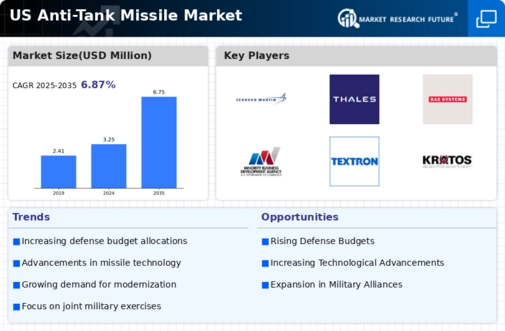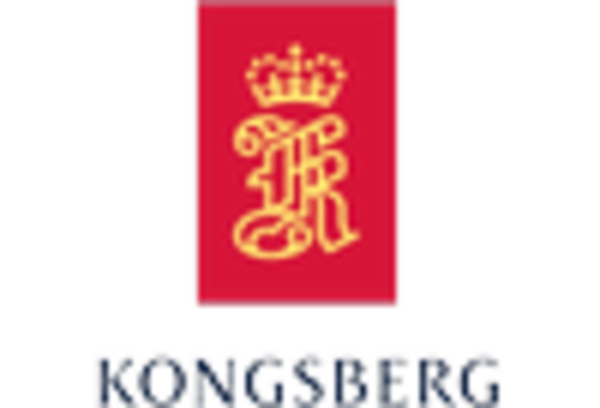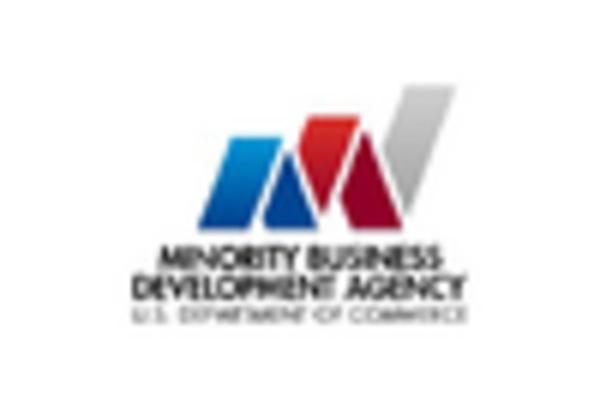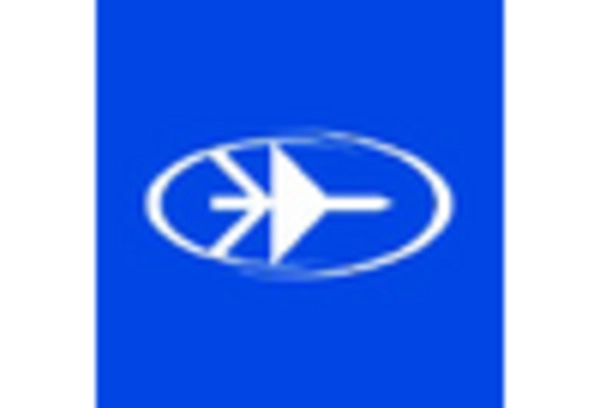Integration of Unmanned Systems
The integration of unmanned systems into military operations is reshaping the anti tank-missile market. Unmanned aerial vehicles (UAVs) and ground robots are increasingly being utilized for reconnaissance and targeting, enhancing the effectiveness of anti tank-missile systems. This trend is particularly evident in the US military, where the use of drones for intelligence gathering has become commonplace. In 2025, it is estimated that 30% of anti tank-missile deployments will involve unmanned systems, reflecting a shift towards more technologically advanced warfare. The anti tank-missile market is adapting to this change, with manufacturers focusing on developing systems that can seamlessly integrate with unmanned platforms.
Increased Focus on Asymmetric Warfare
The anti tank-missile market is being influenced by an increased focus on asymmetric warfare strategies. As military operations evolve, there is a growing recognition of the need for portable and versatile anti tank systems that can be deployed in unconventional combat scenarios. The US military has been investing in lightweight, man-portable anti tank-missiles that can be easily transported by infantry units. In 2025, the market for these systems is projected to grow by 20%, driven by the demand for flexibility in combat situations. The anti tank-missile market is thus responding to this trend by innovating solutions that cater to the unique challenges posed by asymmetric warfare.
Advancements in Missile Guidance Technology
Advancements in missile guidance technology are significantly impacting the anti tank-missile market. The development of precision-guided munitions has enhanced the effectiveness of anti tank systems, allowing for greater accuracy and reduced collateral damage. The US military has been at the forefront of these technological advancements, investing heavily in research to improve guidance systems. In 2025, it is anticipated that 40% of new anti tank-missile systems will incorporate advanced guidance technologies, reflecting a shift towards more sophisticated weaponry. The anti tank-missile market is thus likely to experience growth as manufacturers strive to incorporate these innovations into their product offerings.
Geopolitical Tensions and Regional Conflicts
Geopolitical tensions and regional conflicts are driving the anti tank-missile market as nations seek to bolster their military capabilities. The US, in particular, has been involved in various international engagements that highlight the necessity for advanced anti tank systems. The ongoing conflicts in regions such as Eastern Europe and the Middle East have prompted the US to enhance its military readiness. In 2025, the US government reported a 15% increase in defense contracts related to anti tank-missile systems, indicating a proactive approach to potential threats. The anti tank-missile market is thus likely to see sustained demand as countries prioritize defense spending in response to these geopolitical dynamics.
Emerging Threats from Advanced Armored Vehicles
The anti tank-missile market is experiencing growth due to the emergence of advanced armored vehicles that pose significant threats to ground forces. As military technology evolves, adversaries are increasingly deploying sophisticated tanks and armored personnel carriers equipped with enhanced protection systems. This necessitates the development and procurement of more effective anti tank-missiles to counter these threats. The US military has recognized this need, leading to increased investments in research and development. In 2025, the US defense budget allocated approximately $800 million specifically for anti tank-missile systems, reflecting the urgency to address these evolving challenges. The anti tank-missile market is thus positioned to expand as defense contractors innovate to meet the demands of modern warfare.

















Leave a Comment